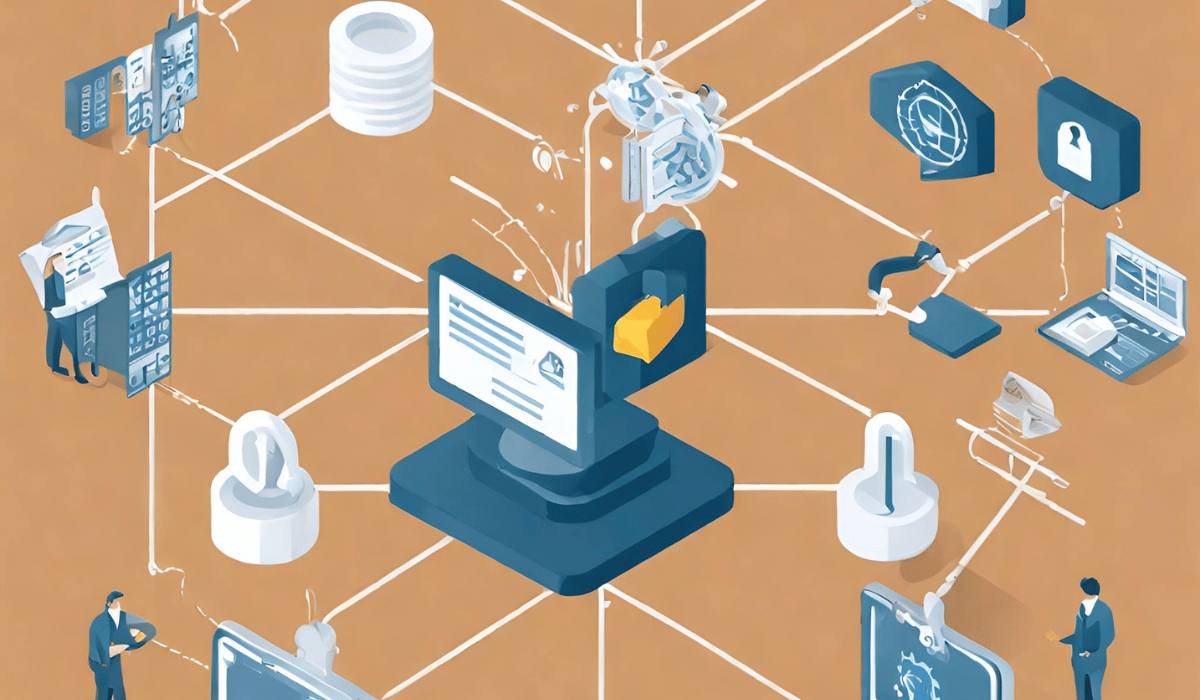Network Security Audit Data refers to the information collected during a comprehensive network security audit.
In the digital age, where data is the lifeblood of organizations, ensuring the security of networks is paramount. Network Security Audit Data is crucial in fortifying your digital fortress against potential threats. We will dive into the intricacies of Network Security Audit Data, its significance, and how it empowers organizations to protect their data and reputation.
Defining Network Security Audit Data

At its core, Network Security Audit Data refers to the information collected during a comprehensive network security audit. This audit involves a meticulous assessment by experts to identify any vulnerabilities, risks, threats, or non-compliance with regulatory standards lurking within the network system. The audit aims to unearth potential weaknesses and take corrective actions to bolster the network’s defenses.
Key Components of Network Security Audit Data
Delving into the specifics, Network Security Audit Data encompasses various crucial elements that provide invaluable insights into the network’s security posture. These key components include:
- Security Policies and Procedures: The audit scrutinizes existing security policies, ensuring they remain up-to-date, robust, and comprehensive.
- Network Architecture: Experts evaluate the network’s design, inspecting critical components like firewalls, intrusion detection systems, and data encryption methods.
- User Access Controls: The audit verifies the access levels of network users and evaluates the efficacy of authentication processes.
- Physical Security: The physical hardware and server locations are thoroughly examined to ensure robust physical security measures.
- Vulnerability Assessments: Through techniques like penetration testing or ethical hacking, potential vulnerabilities that attackers might exploit are identified.
- Incident Response Plans: Organizations’ strategies for handling security breaches effectively are meticulously reviewed.
- Compliance with Regulatory Standards: Compliance with industry or government regulations, such as GDPR or HIPAA, is assessed.
The Purpose of Gathering Network Security Audit Data

Collecting Network Security Audit Data serves a vital purpose. By proactively identifying potential risks and areas of non-compliance, organizations can take corrective actions swiftly, bolstering their network’s resilience against potential threats. The audit findings are typically documented in a comprehensive report containing actionable recommendations for improving network security.
How to Audit Network Security in 10 Steps?

- Define Network Security Policy: Establish and regularly review a clear and comprehensive network security policy with well-defined roles and responsibilities.
- Network Architecture Assessment: Thoroughly review the network diagram, segregating different zones (e.g., DMZ, Internal, Production) and ensuring no direct external connectivity to the internal network.
- Eliminate Single Points of Failure: Safeguard against single points of failure by ensuring the resilience of critical components like firewalls, core switches, routers, internet, and telecom lines. Segregate guest and corporate networks to reduce risk.
- Implement Firewalls and IDS/IPS: Deploy robust perimeter firewalls and implement intrusion detection and prevention systems to detect and thwart potential threats.
- Secure Data in Transit: Employ encryption, SFTP, or VPN tunnels to safeguard data during transmission.
- Maintain Network Assets and Changes: Keep an updated asset register, and manage changes to network devices through a well-defined procedure. Regularly review change logs to stay on top of network modifications.
- Harden Network Devices: Establish baseline security policies, apply timely security patches, and review and manage privileged user access.
- Log and Monitor Security Events: Log security events to a centralized Syslog or SIEM server for effective anomaly detection. Ensure robust physical security in the data center.
- Test Network Resiliency and Capacity: Regularly conduct testing for business continuity management and monitor network capacity to ensure it meets current and future demands.
- Regular Configuration Reviews and Testing: Regularly conduct configuration reviews, vulnerability assessments, and penetration testing to promptly identify and address potential vulnerabilities.
Network Security Audit Data and ISO 27001 Compliance: The Network Security Audit Data checklist plays a pivotal role in ensuring compliance with ISO 27001 requirements. It carefully maps compliance questionnaires to ISO 27001 Clauses, Controls, and Domains, enabling focused remediation and performance analysis.
Key Takeaways:
- Network Security Audit Data assesses vulnerabilities, risks, and regulatory compliance.
- Key components include security policies, network architecture, user access controls, physical security, vulnerability assessments, incident response plans, and regulatory compliance checks.
- Conducting a network security audit involves ten crucial steps to enhance network security effectively.
- Aligning with ISO 27001 compliance through Network Security Audit Data ensures focused remediation and performance analysis.
FAQs
Q1. What is Network Security Audit Data, and why is it important?
A1. Network Security Audit Data is information collected during a comprehensive network security audit to assess vulnerabilities, risks, threats, and regulatory compliance. It is vital to proactively identify and address potential security risks to fortify network defenses.
Q2. What are the significant components of Network Security Audit Data?
A2. Key components include security policies, network architecture, user access controls, physical security, vulnerability assessments, incident response plans, and regulatory compliance checks.
Q3. How can organizations conduct a network security audit effectively?
A3. Conducting a network security audit involves ten critical steps, including defining security policies, assessing network architecture, eliminating single points of failure, implementing firewalls and IDS/IPS, securing data in transit, maintaining network assets and changes, hardening network devices, logging and monitoring security events, testing network resiliency and capacity, and conducting regular configuration reviews and testing.
Q4. How does Network Security Audit Data help with ISO 27001 compliance?
A4. The Network Security Audit Data checklist ensures adherence to ISO 27001 requirements by mapping compliance questionnaires to ISO 27001 Clauses, Controls, and Domains, enabling focused remediation and performance analysis.
Conclusion
Network Security Audit Data is the guardian of your digital realm, arming organizations with insights to fortify their networks against cyber threats. By systematically assessing network security measures and proactively addressing vulnerabilities, organizations can safeguard their valuable data and maintain the trust of users and stakeholders. Remember, proactive measures are the key to securing your digital future.
